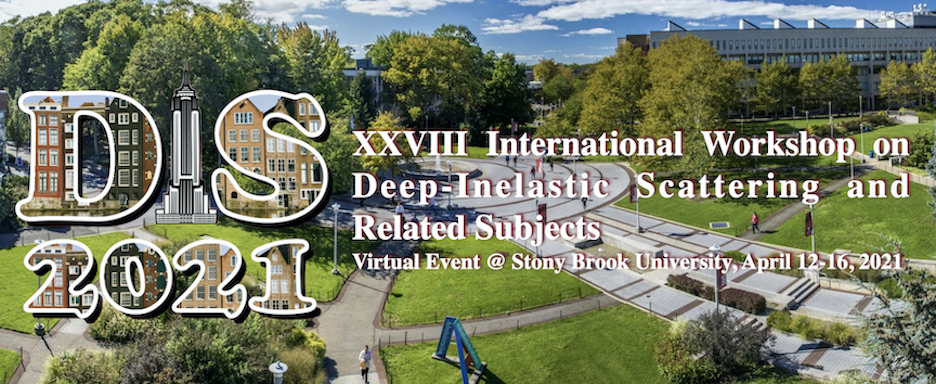Speaker
Description
This paper presents an experimental study of proton-proton collision events where the two leading jets are separated by a large pseudorapidity interval devoid of particle activity, referred to as jet-gap-jet events. The pseudorapidity gap is expected from hard color-singlet exchange. The analysis is based on data collected by the CMS and TOTEM experiments during a low luminosity, high-$\beta^*$ run at the CERN LHC in 2015. Events with a low number of charged particles between the jets are observed in excess of calculations that assume only color-exchange dijet contributions. The fraction of dijet events produced via color-singlet exchange, $f_\text{CSE}$, is measured as a function of $p_\text{T}^\text{jet2}$, the pseudorapidity difference between the two leading jets, and the azimuthal angular separation between the two leading jets. The fraction $f_\text{CSE}$ has values of $0.6$--$1.0$\%. It increases with the pseudorapidity difference between the jets, has a weak dependence on $p_\text{T}^\text{jet2}$, and increases as the azimuthal angular difference between the jets approaches $\pi$. The results are compared with previous measurements and with predictions from perturbative quantum chromodynamics. In addition, the paper presents the first study of jet-gap-jet events detected in association with an intact proton, interpreted as a proton-gap-jet-gap-jet topology, using a subsample of events with an integrated luminosity of $0.40\,\text{pb}^{-1}$. The intact protons are detected with the Roman pot detectors of the TOTEM experiment. The $f_\text{CSE}$ measured in this sample is $2.91 \pm 0.70$ (stat) $^{+ 1.02}_{- 0.94}$ (syst) times larger than that for inclusive dijet production in dijets with similar kinematics.

